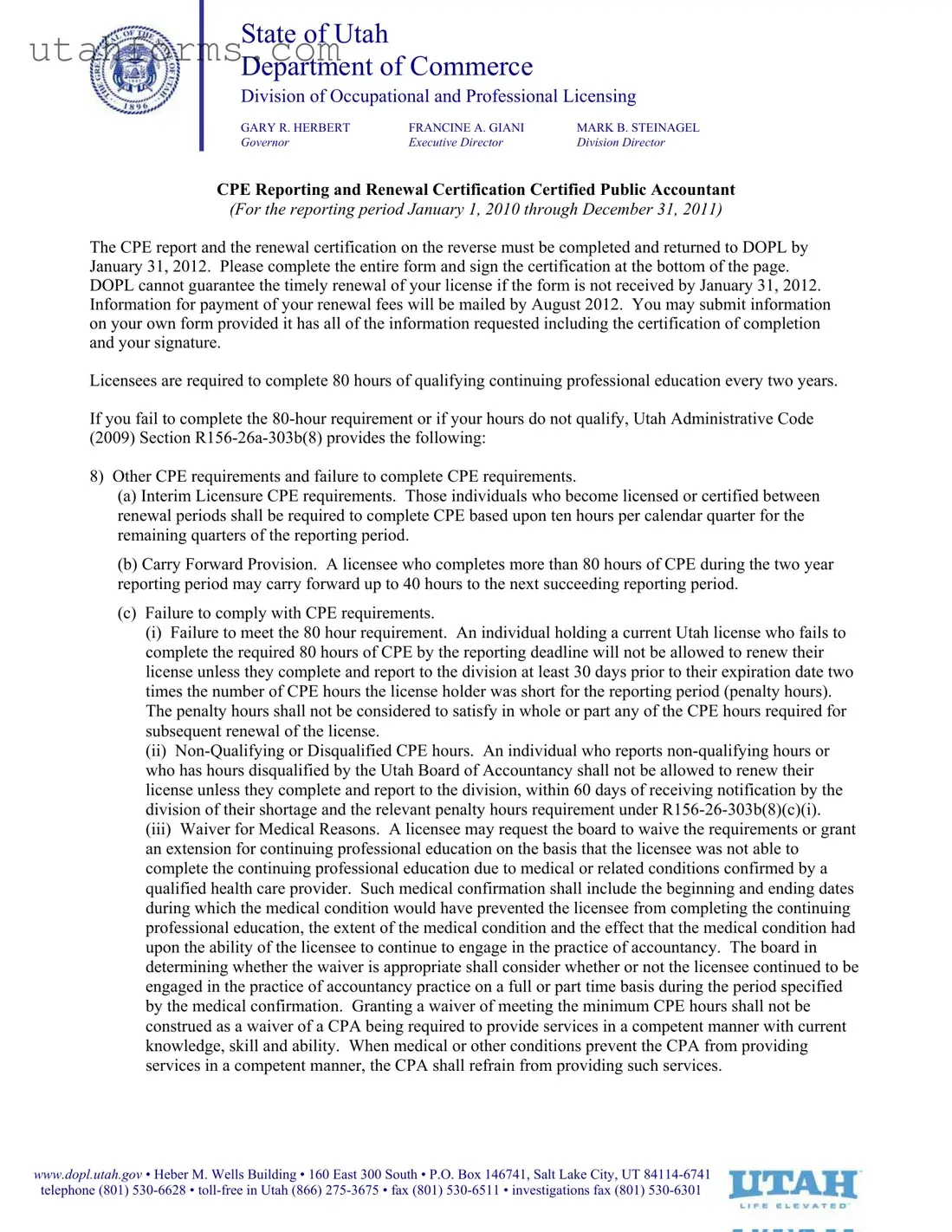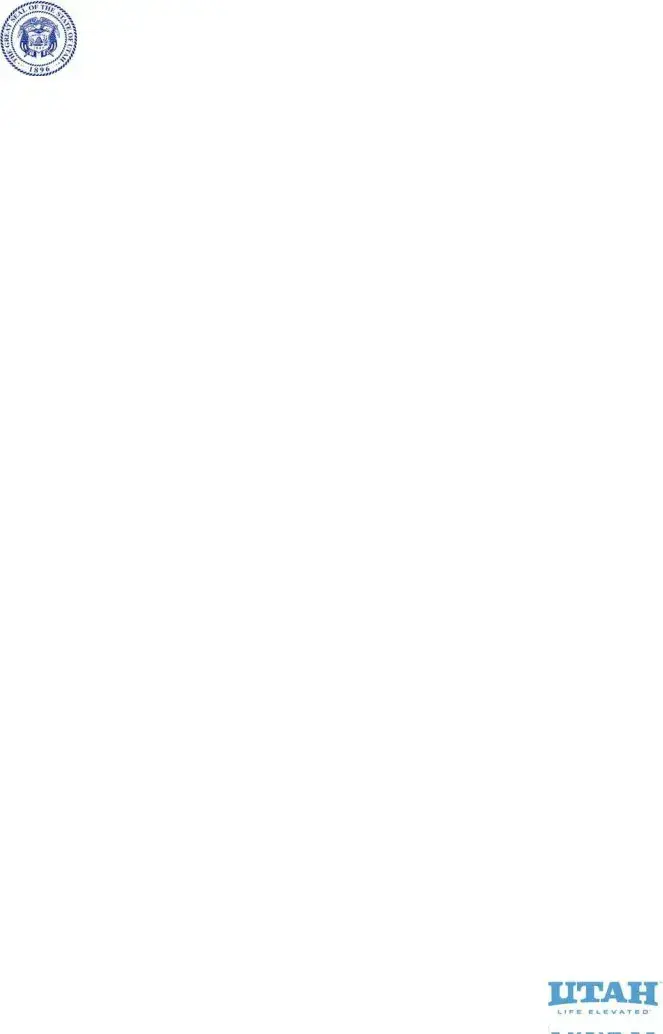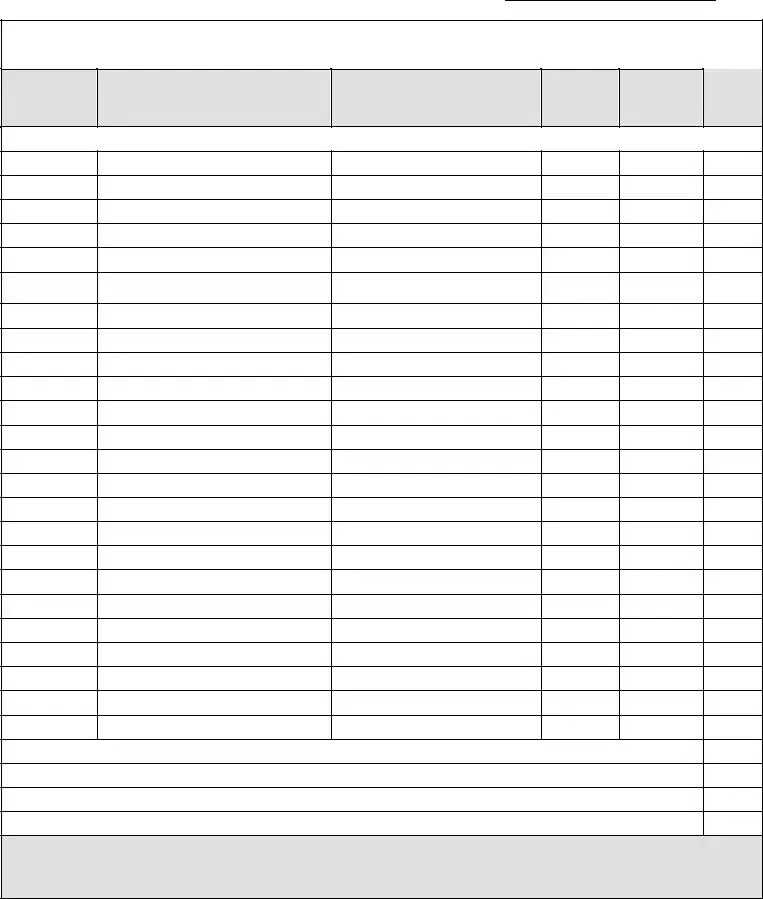State of Utah
Department of Commerce
Division of Occupational and Professional Licensing
GARY R. HERBERT |
FRANCINE A. GIANI |
MARK B. STEINAGEL |
Governor |
Executive Director |
Division Director |
CPE Reporting and Renewal Certification Certified Public Accountant (For the reporting period January 1, 2010 through December 31, 2011)
The CPE report and the renewal certification on the reverse must be completed and returned to DOPL by January 31, 2012. Please complete the entire form and sign the certification at the bottom of the page. DOPL cannot guarantee the timely renewal of your license if the form is not received by January 31, 2012. Information for payment of your renewal fees will be mailed by August 2012. You may submit information on your own form provided it has all of the information requested including the certification of completion and your signature.
Licensees are required to complete 80 hours of qualifying continuing professional education every two years.
If you fail to complete the 80-hour requirement or if your hours do not qualify, Utah Administrative Code
(2009) Section R156-26a-303b(8) provides the following:
8)Other CPE requirements and failure to complete CPE requirements.
(a)Interim Licensure CPE requirements. Those individuals who become licensed or certified between renewal periods shall be required to complete CPE based upon ten hours per calendar quarter for the remaining quarters of the reporting period.
(b)Carry Forward Provision. A licensee who completes more than 80 hours of CPE during the two year reporting period may carry forward up to 40 hours to the next succeeding reporting period.
(c)Failure to comply with CPE requirements.
(i)Failure to meet the 80 hour requirement. An individual holding a current Utah license who fails to complete the required 80 hours of CPE by the reporting deadline will not be allowed to renew their license unless they complete and report to the division at least 30 days prior to their expiration date two times the number of CPE hours the license holder was short for the reporting period (penalty hours). The penalty hours shall not be considered to satisfy in whole or part any of the CPE hours required for subsequent renewal of the license.
(ii)Non-Qualifying or Disqualified CPE hours. An individual who reports non-qualifying hours or who has hours disqualified by the Utah Board of Accountancy shall not be allowed to renew their license unless they complete and report to the division, within 60 days of receiving notification by the division of their shortage and the relevant penalty hours requirement under R156-26-303b(8)(c)(i).
(iii)Waiver for Medical Reasons. A licensee may request the board to waive the requirements or grant an extension for continuing professional education on the basis that the licensee was not able to complete the continuing professional education due to medical or related conditions confirmed by a qualified health care provider. Such medical confirmation shall include the beginning and ending dates during which the medical condition would have prevented the licensee from completing the continuing professional education, the extent of the medical condition and the effect that the medical condition had upon the ability of the licensee to continue to engage in the practice of accountancy. The board in determining whether the waiver is appropriate shall consider whether or not the licensee continued to be engaged in the practice of accountancy practice on a full or part time basis during the period specified by the medical confirmation. Granting a waiver of meeting the minimum CPE hours shall not be construed as a waiver of a CPA being required to provide services in a competent manner with current knowledge, skill and ability. When medical or other conditions prevent the CPA from providing services in a competent manner, the CPA shall refrain from providing such services.


